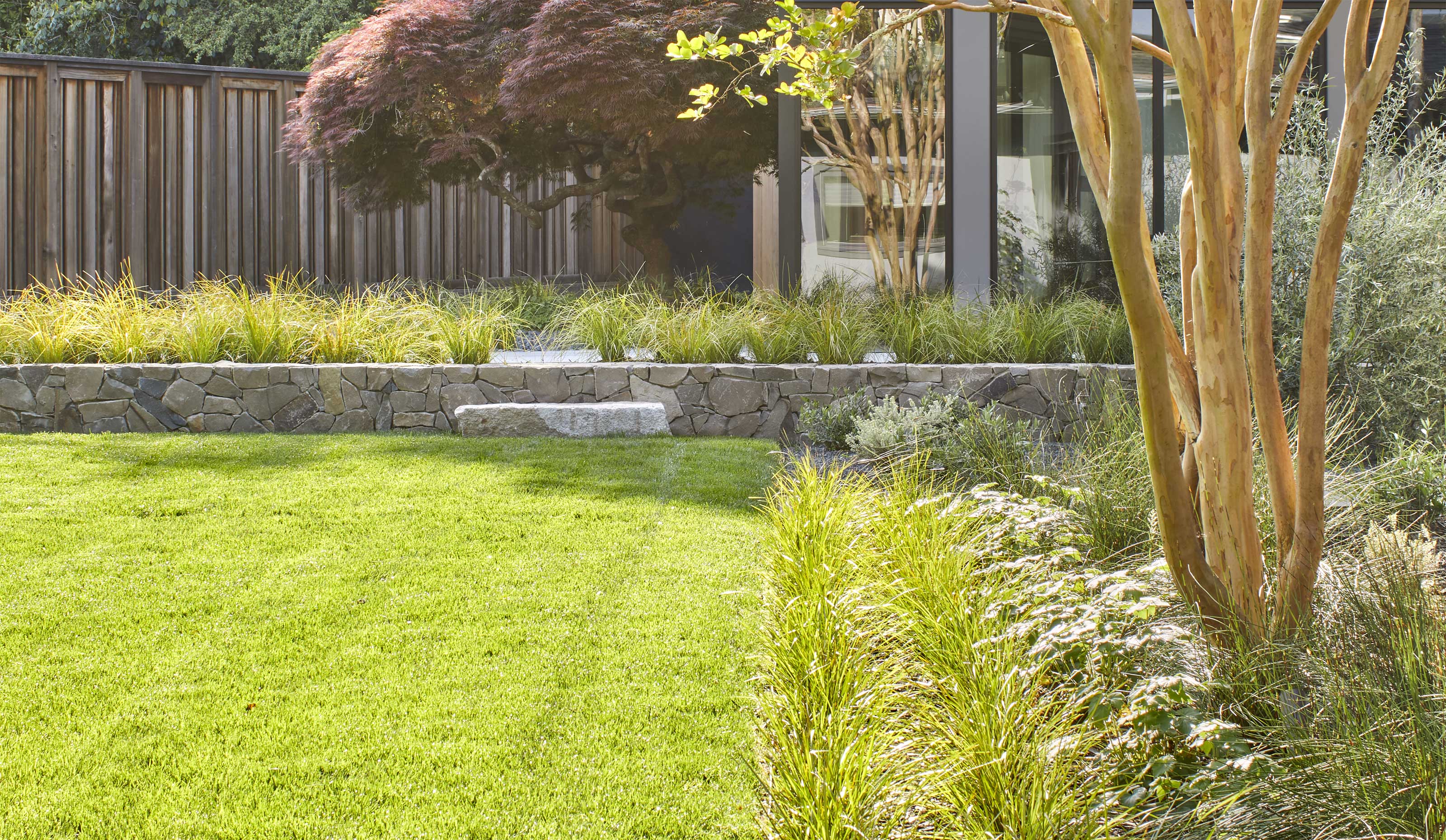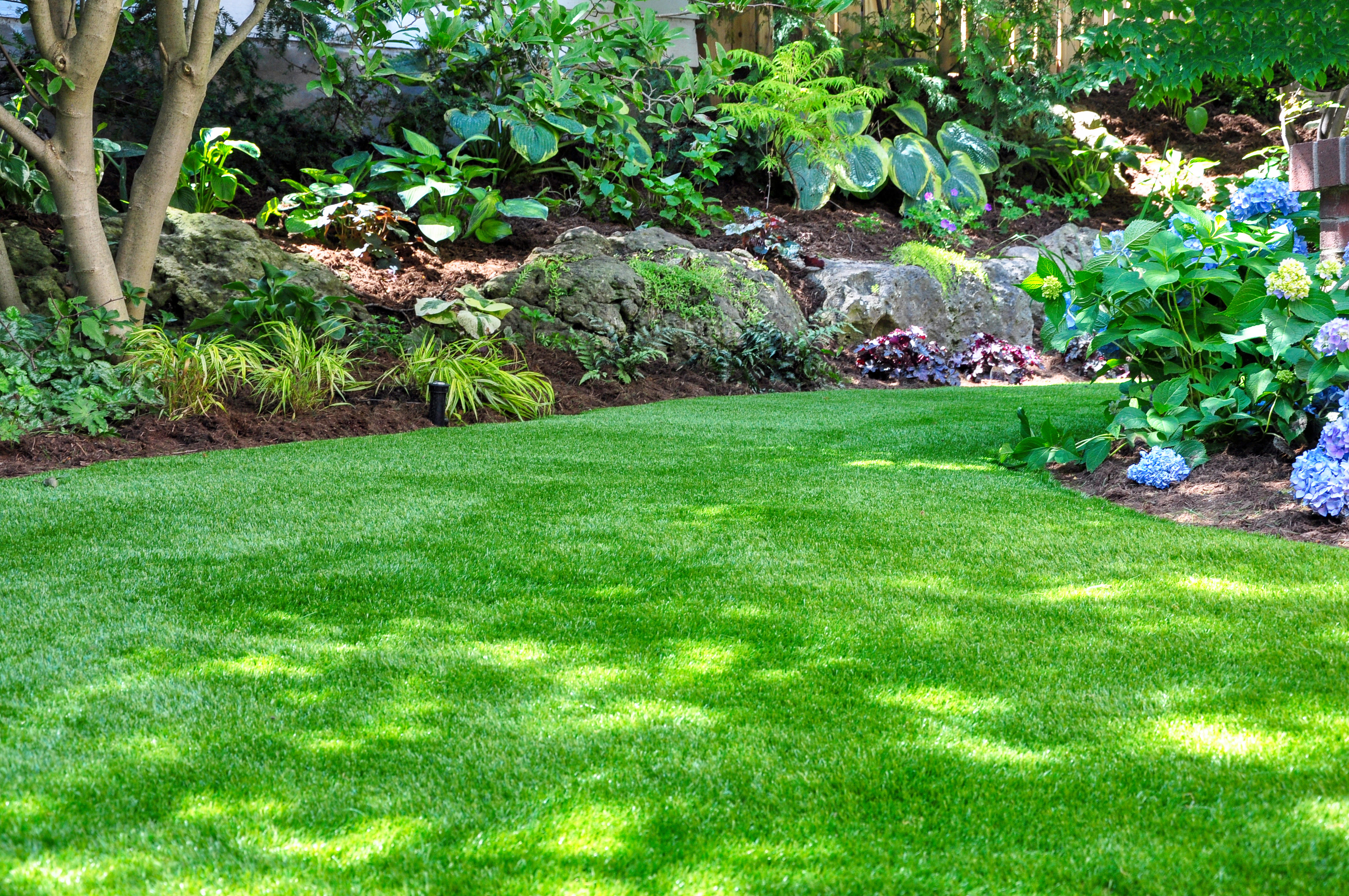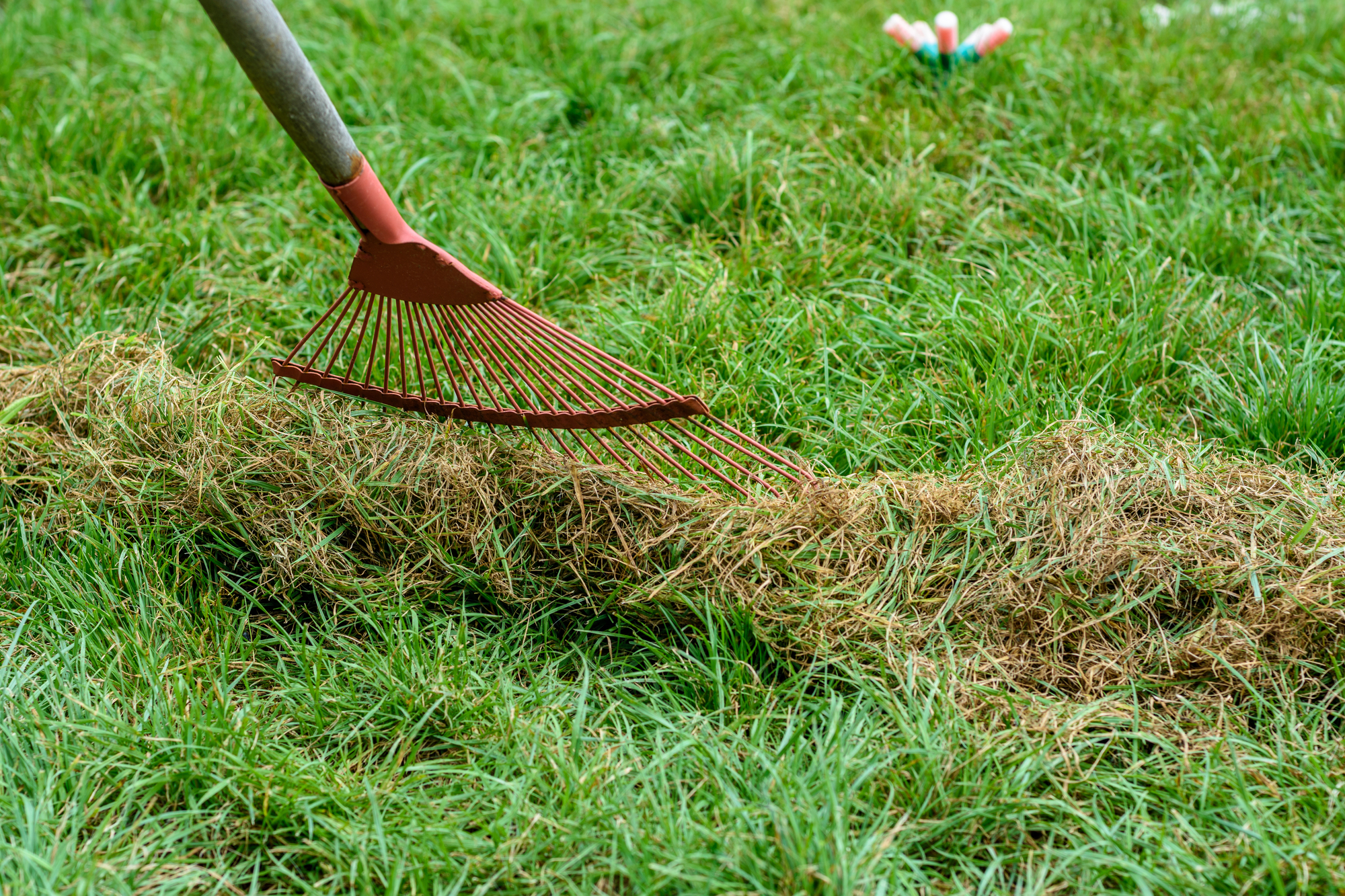
Keeping your lawn looking its best during the heat of summer is something of an Olympic sport. Luscious green grass takes a lot of high maintenance, not to mention a great deal of physical labor, yet a stumbling block for many of us is the inability to recognize the signs of an unhealthy lawn.
From discolored grass and patchy growth to uncontrollable weeds and waterlogged lawns, there are countless different ways for your lawn to go downhill. The trick to keeping it healthy is knowing how to identify them and rectify each one appropriately. It's the foundations of lawn care, 101.
If your backyard is looking worse for wear this season, fear not - we're here to help you get your modern garden back in tip-top shape. Here, we ask some experienced landscapers and lawn experts how to recognize the various signs your lawn is crying out for help, alongside tips on how to treat it for grass so green and thick you'll be spending the rest of the summer outdoors.
1. Discolored patches

One of the most common signs of an unhappy lawn during summer is yellow or brown discolored patches. The confusing part is that this could indicate any number of things.
If you've experienced particularly dry weather conditions in your area, Ryan Farley of Lawn Starter says a uniform brown lawn is quite common. 'If your lawn is only going brown in spots, however, you may have an issue with burrowing pests like grubs,' he says. 'One simple, if drastic way to get rid of grubs is to stop watering your lawn. If you can keep from watering for three to four weeks, you should be able to kill any grubs and then start watering again.' Before you take any drastic measures, it's a good idea to get a gardener or pest control in to confirm the cause.
'Yellow or brown patches can often also indicate a lack of nutrients, over-watering, or pest infestations,' explains Tony O'Neill, a gardening expert and owner of Simplify Gardening. 'Regular lawn feed and proper watering techniques are the best antidote to the first two of these causes.'
If you've switched up your watering and fertilizing schedule but the problems still persist, you might want to perform a soil test in your backyard before jumping to any further conclusions. 'This is because your lawn could be dealing with a pH level that is too low or too high,' notes Jeremy Yamaguchi, owner of Lawn Love. 'If it’s too low (acidic), you’ll need to add more iron, and if it’s too high (alkaline), you’ll want to lower it with sulfur. A neutral soil allows for healthier, greener grass.'
2. Sparse growth
Patchy areas on your lawn can be a serious eyesore but again, there are several possible reasons for these bare spots.
'High foot traffic or several types of diseases can cause bare spots on a lawn,' explains Jeremy. 'It could be because of poor soil conditions, chemical spills, fungus, or buried rocks, while bald or scalped patches could also be a result of mowing your lawn too short.'
Jeremy goes on to say that the best solution is to dig up these bare or bald spots completely, as well as a few inches of the surrounding healthy grass around them, before lightly tilling the area. 'Afterwards, layer in loose topsoil then reseed, and finally irrigate the lawn,' he adds. You could also try overseeding your lawn for fuller-looking grass.
If these root causes seem unlikely, Tony says sparse and uneven growth could be a result of insufficient sunlight. 'If this is the case, consider pruning any overhanging branches to let in more light,' he says. 'Alternatively, it could indicate soil compaction. Aerating the lawn and applying a top dressing could help alleviate this.'
3. Weeds

All of us have to contend with weeds in our gardens at some point, but if they're proving particularly troublesome within your lawn it certainly deserves some extra care and attention.
'If you notice a sudden and unusual uptick in weeds in your lawn, it could be a sign that your grass is unhealthy and can't fend off the invaders,' Ryan explains. 'Pulling or spraying the weeds will solve the immediate problem, but you should also consider other forms of lawn maintenance to make your grass healthier and more weed-resistant.'
It sounds simple, but general upkeep is the secret to a better-looking lawn that's healthy enough to ward off weeds. 'Regular mowing, proper feeding, and overseeding can boost your lawn's health and resistance,' says Tony.
4. Lots of fungi or moss
On a similar note, a lawn riddled with fungi or moss is also a cause for concern. 'If your lawn is regularly growing mushrooms, it's usually a sign that you're overwatering,' notes Ryan. 'While this can sometimes be related to drainage issues and can be solved by aeration, it's more likely that you're just going through a wet spell or are watering your lawn too frequently.'
Since it prefers damp and moist conditions, moss also works in a similar way (which is why it's commonly found in shady gardens). In such cases, cutting back on the watering regime should cause both mushrooms and moss to go away. Additionally, because moss is shallow-rooted, you should be able to rake it out as well.
If you see no changes after adjusting your watering schedule, you might have a deeper-rooted problem to contend with. 'Both moss and fungi often indicate poor drainage or overly acidic soil,' Tony says. 'Improving soil quality, possibly by adding lime to raise pH, and resolving drainage issues should mitigate these problems.'
5. Crunchy textured grass

If your grass is on the dry, crispy side, you'll need to act fast. 'A lawn that feels crunchy underfoot, it's likely too dry,' Tony notes. 'Deep and infrequent watering, early morning or late evening, can help maintain adequate moisture levels.' Watering your grass in the evening or the early morning this way will prevent it from evaporating too quickly in the sun.
Dead, crunchy patches could also be a sign your grass is lacking the nutrients it needs. 'Grass that is well fed will maintain its health, thickness, and appearance, however,' explains Chris McIlroy, a grass expert at The Grass People. 'If you have neglected to feed your lawn, you will start to notice some patches, thinning of your grass, and a lack in overall health and vibrance.' Make sure you incorporate a nitrogen-rich fertilizer in your lawn care regime for luscious green grass all year round.
6. Pooling water
A waterlogged yard is to be expected after heavy rainfall, but if your lawn isn't draining water at all, you'll need to investigate the problem.
As Ryan explains: 'If your lawn is retaining a lot of water after the rain, it could be a sign that it's too compacted and root-bound to allow for proper drainage. Aerating and de-thatching your lawn can help with drainage problems, as can working proper drainage into your landscaping with rain gardens.'
According to Chris, this could simply be down to heavy footfall in your garden (if, say, you have kids who play outside or if you recently hosted a garden party). 'If your lawn has a heavy footfall on it for a long period of time, it may become compacted, which could lead to water logging on the surface of the soil,' he says.
'You will notice pools of water gathering on the surface or your grass surface will be very spongy and moist. This is a sign that you need to aerate your lawn to help water, air and nutrients to travel to where they need to.'
7. Thatch build up

'A thick layer of decomposing plant material, or thatch, between the grass and the soil, can prevent water, air, and nutrients from reaching the grassroots,' Tony says. 'Regular dethatching and aeration can keep thatch build-up under control.'
This can be done with a rake or manual aerator tools such as this one, from Amazon if you have a small garden, or you can buy an electric dethatched like this one if you have a larger lawn.



!["[T]he First and Fifth Amendments Require ICE to Provide Information About the Whereabouts of a Detained Person"](https://images.inkl.com/s3/publisher/cover/212/reason-cover.png?w=600)



